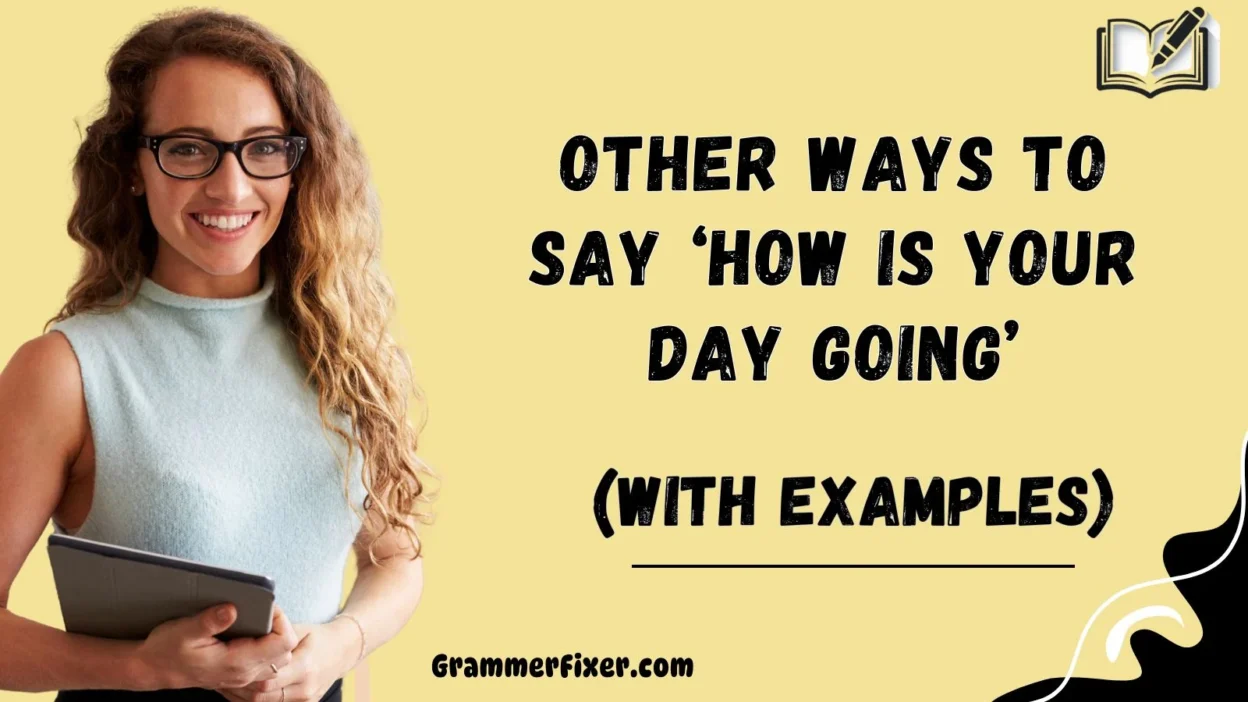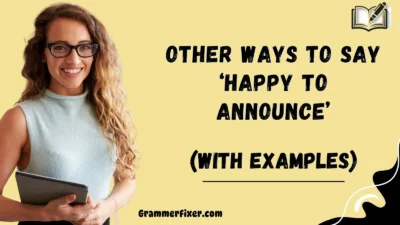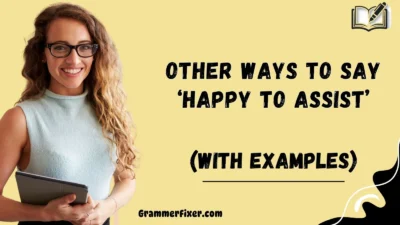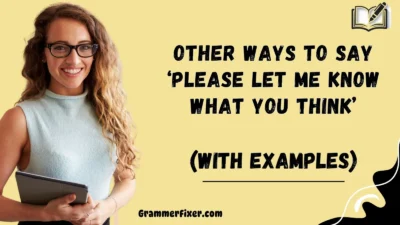Sometimes, the right words can make all the difference in showing genuine care. A simple “How is your day going?” is warm, but it can feel repetitive in daily interactions. By finding thoughtful alternatives, you can bring more depth to your conversations, make people feel truly heard, and strengthen your relationships—whether it’s with a friend, colleague, or loved one.
Below, we’ll explore 30 engaging alternatives you can use, complete with examples, tone, and best contexts.
What Does “How Is Your Day Going” Mean?
At its core, “How is your day going” is an open-ended, caring question that invites someone to share their experiences, emotions, and activities. It’s both casual and polite, making it suitable for most everyday conversations.
When to Use “How Is Your Day Going”?
You can use it when you want to:
- Check in on a friend or colleague.
- Show empathy and care during a busy or stressful day.
- Start small talk that can lead to a deeper conversation.
- Build connections in both personal and professional contexts.
Is It Professional/Polite to Say “How Is Your Day Going”?
Yes. It is considered polite and professional, especially when directed at colleagues, acquaintances, or clients. However, in formal work settings, you may want to adapt it to something slightly more polished, like “How has your day been so far?”
Pros and Cons of Saying “How Is Your Day Going”?
Pros:
- Friendly and approachable.
- Easy to understand and use in any setting.
- Opens the door to more meaningful dialogue.
Cons:
- Can feel generic or overused.
- May lead to short, unengaged responses like “Fine.”
- Not always appropriate in highly formal situations.
1. What’s Up?
Meaning: A casual and direct way to check in.
Explanation: Informal, commonly used among friends.
Example: “Hey, what’s up? Been a while since we talked.”
Best Use: With friends or peers in casual settings.
Worst Use: In professional or formal conversations—it may sound too casual or sloppy.
Tone: Relaxed, playful, informal.
2. How’s It Going?
Meaning: A classic alternative to check someone’s overall state.
Explanation: Friendly and conversational.
Example: “Hi Sarah, how’s it going with the new project?”
Best Use: Both casual chats and workplace small talk.
Worst Use: In formal client meetings where polished phrasing is expected.
Tone: Neutral, approachable.
3. How Are Things With You?
Meaning: A slightly more personal variation.
Explanation: Encourages the other person to share more detail.
Example: “How are things with you? Haven’t seen you since last week.”
Best Use: Friends, colleagues you know well.
Worst Use: With strangers or in brief encounters where depth isn’t appropriate.
Tone: Warm, considerate.
4. What’s New With You?
Meaning: Shows curiosity about recent updates.
Explanation: Makes the conversation feel fresh.
Example: “What’s new with you? Anything exciting happening?”
Best Use: Catching up with friends, family, or teammates.
Worst Use: During a tense or stressful moment (like before a deadline)—it may sound dismissive.
Tone: Friendly, curious, engaging.
5. How’s Your Day Unfolding?
Meaning: A poetic and gentle way to ask how someone’s day is progressing.
Explanation: Focuses on the “flow” of the day rather than a simple status check.
Example: “How’s your day unfolding? I hope it’s been smooth so far.”
Best Use: In personal conversations or supportive check-ins.
Worst Use: In a strictly professional setting where straightforward phrasing is expected.
Tone: Warm, reflective, empathetic.
6. Anything Exciting Happening Today?
Meaning: Asks about noteworthy or positive moments in someone’s day.
Explanation: Invites the other person to share specific highlights.
Example: “Anything exciting happening today? Maybe something you’re looking forward to?”
Best Use: With friends, family, or relaxed team settings.
Worst Use: When someone is clearly stressed, tired, or overwhelmed.
Tone: Lighthearted, upbeat, encouraging.
7. How Have You Been Holding Up?
Meaning: A caring, empathetic check-in about someone’s well-being.
Explanation: Often used when someone may be under stress or going through challenges.
Example: “How have you been holding up with all the deadlines this week?”
Best Use: During stressful times or when supporting a colleague/friend.
Worst Use: As casual small talk—it may sound heavy if no struggles are expected.
Tone: Compassionate, serious, supportive.
8. Are You Keeping Well?
Meaning: A slightly formal way to ask about someone’s health and general well-being.
Explanation: Often used in polite, professional, or distant relationships.
Example: “Good afternoon, Mr. Chen. Are you keeping well these days?”
Best Use: In professional emails or formal conversations.
Worst Use: With close friends—it may sound stiff or impersonal.
Tone: Polite, respectful, formal.
9. What’s Been the Highlight of Your Day So Far?
Meaning: Encourages sharing a positive or memorable moment from the day.
Explanation: More specific than the generic “How’s your day going?”
Example: “What’s been the highlight of your day so far? Mine was the coffee run this morning.”
Best Use: To spark uplifting conversations with colleagues, friends, or family.
Worst Use: With someone who’s had a difficult or upsetting day—it may feel insensitive.
Tone: Optimistic, thoughtful, engaging.
10. How’s Everything Going On Your End?
Meaning: A balanced way of checking progress and well-being.
Explanation: Works both personally and professionally.
Example: “How’s everything going on your end? We’re wrapping up our part of the project.”
Best Use: During collaborative projects or team updates.
Worst Use: With strangers or casual acquaintances, since it implies deeper context.
Tone: Neutral, professional, considerate.
11. How’s Life Treating You?
Meaning: A casual but empathetic way to ask about someone’s general well-being.
Explanation: Suggests genuine curiosity about both the good and bad aspects of life.
Example: “Hey Tom, how’s life treating you these days?”
Best Use: With friends, colleagues you know well, or acquaintances you want to reconnect with.
Worst Use: In strictly formal business conversations—it may sound too personal.
Tone: Warm, casual, empathetic.
12. How’s Your Week Going So Far?
Meaning: A broader question that looks at the week’s overall flow, not just one day.
Explanation: Allows people to reflect on progress, challenges, or highlights.
Example: “How’s your week going so far? Any wins you want to celebrate?”
Best Use: In team check-ins or catching up with friends midweek.
Worst Use: On a Monday morning—there’s little week to reflect on yet.
Tone: Professional yet friendly, open-ended.
13. How’s the Day Treating You?
Meaning: A friendly, slightly playful rephrase of “How’s your day going?”
Explanation: Personifies the day, making the question feel more lighthearted.
Example: “How’s the day treating you? Hopefully better than yesterday’s chaos!”
Best Use: In casual chats with coworkers, peers, or friends.
Worst Use: With superiors or clients—may come across as too informal.
Tone: Playful, conversational, upbeat.
14. What’s Been Keeping You Busy Today?
Meaning: A check-in that shows interest in someone’s tasks and activities.
Explanation: Invites a specific and thoughtful response instead of just “fine.”
Example: “What’s been keeping you busy today? I feel like I’ve been buried in emails.”
Best Use: Workplace conversations where you want details or progress updates.
Worst Use: With someone who is overwhelmed—it may sound like piling on pressure.
Tone: Engaged, specific, semi-professional.
15. How Are You Feeling Today?
Meaning: A direct but caring question about someone’s emotional state.
Explanation: Shifts the focus from activities to emotions and well-being.
Example: “How are you feeling today? Hope you’re a bit more relaxed than yesterday.”
Best Use: With friends, family, or colleagues you share trust with.
Worst Use: In professional introductions or formal emails—it may feel too personal.
Tone: Gentle, empathetic, caring.
16. How’s Your Energy Level Today?
Meaning: A thoughtful check-in about someone’s physical or emotional energy.
Explanation: Goes deeper than a surface-level question, showing concern for well-being.
Example: “How’s your energy level today? Need a quick break before the meeting?”
Best Use: With coworkers, teammates, or close friends when you notice they may be drained.
Worst Use: With new acquaintances or formal clients—it can sound too personal.
Tone: Supportive, empathetic, wellness-focused.
17. What’s Been the Best Part of Your Day So Far?
Meaning: A positive and specific way to encourage sharing highlights.
Explanation: Shifts focus to gratitude, optimism, and memorable moments.
Example: “What’s been the best part of your day so far? For me, it was finishing that report early.”
Best Use: To uplift conversations with friends, family, or coworkers.
Worst Use: After someone’s rough or upsetting day—it may feel tone-deaf.
Tone: Optimistic, cheerful, uplifting.
18. How’s Everything Flowing for You Today?
Meaning: A smooth, metaphorical way to ask about daily progress.
Explanation: Suggests curiosity about the rhythm and pace of someone’s day.
Example: “How’s everything flowing for you today? Things have been non-stop on my side.”
Best Use: With colleagues or peers in casual workplace chats.
Worst Use: In formal or traditional environments—it may sound too poetic.
Tone: Relaxed, modern, slightly creative.
19. How’s Your Mood Today?
Meaning: A direct and empathetic question about emotional well-being.
Explanation: Focuses on the person’s mental and emotional state rather than activities.
Example: “How’s your mood today? You seem a little quieter than usual.”
Best Use: With close colleagues, friends, or loved ones you know well.
Worst Use: In surface-level small talk—it can feel too probing or intrusive.
Tone: Caring, sensitive, reflective.
20. What’s Been On Your Mind Today?
Meaning: Invites someone to share thoughts, concerns, or priorities.
Explanation: Encourages deeper conversation beyond day-to-day tasks.
Example: “What’s been on your mind today? Anything I can help with?”
Best Use: With friends, partners, or teammates when you want to connect meaningfully.
Worst Use: With casual acquaintances or quick hallway chats—it may feel too heavy.
Tone: Thoughtful, empathetic, conversation-deepening.
21. How’s Your Workload Treating You Today?
Meaning: A check-in that specifically addresses work-related stress and tasks.
Explanation: Shows concern for professional well-being and balance.
Example: “How’s your workload treating you today? Do you need any extra support?”
Best Use: With coworkers, employees, or team members.
Worst Use: With friends or casual acquaintances—it may sound irrelevant.
Tone: Professional, supportive, considerate.
22. How’s Your Day Shaping Up?
Meaning: A forward-looking way to ask how the day is progressing.
Explanation: Suggests curiosity about how things are developing or unfolding.
Example: “How’s your day shaping up? Hope it’s looking productive.”
Best Use: In midday check-ins with colleagues, partners, or friends.
Worst Use: At the very end of the day—the phrasing may feel off.
Tone: Upbeat, conversational, optimistic.
23. How’s the Vibe of Your Day So Far?
Meaning: A modern, casual way to ask about the general feeling or mood of the day.
Explanation: Works well in informal or creative circles.
Example: “How’s the vibe of your day so far? Mine’s been surprisingly calm.”
Best Use: With friends, peers, or younger colleagues in casual contexts.
Worst Use: In formal professional settings—may sound too slangy.
Tone: Playful, relaxed, modern.
24. What’s Been Interesting for You Today?
Meaning: A curious way to invite sharing of unique or engaging experiences.
Explanation: Moves beyond generic questions to spark deeper conversation.
Example: “What’s been interesting for you today? I learned something new in our client meeting.”
Best Use: To break monotony in conversations with friends or coworkers.
Worst Use: When someone is having a dull or exhausting day—it may feel forced.
Tone: Inquisitive, thoughtful, engaging.
25. How’s Your Day Progressing?
Meaning: A slightly more formal alternative to “How’s your day going?”
Explanation: Focuses on the ongoing flow and productivity of the day.
Example: “How’s your day progressing? Have you managed to tackle the main tasks yet?”
Best Use: In professional environments where polite phrasing is preferred.
Worst Use: In casual conversations with close friends—may feel stiff.
Tone: Professional, polite, steady.
26. What’s Been the Biggest Challenge of Your Day?
Meaning: Encourages openness about struggles or difficulties.
Explanation: Shows empathy and interest in real experiences, not just positives.
Example: “What’s been the biggest challenge of your day? Maybe I can help brainstorm solutions.”
Best Use: With friends or colleagues you have trust with.
Worst Use: In lighthearted or brief interactions—may feel too heavy-handed.
Tone: Empathetic, reflective, serious.
27. How’s Your Day Flowing So Far?
Meaning: A smooth and casual way to ask about the pace and rhythm of the day.
Explanation: Similar to “How’s your day going?” but with a slightly softer, poetic edge.
Example: “How’s your day flowing so far? Mine’s been nonstop meetings.”
Best Use: With colleagues or casual friends when you want to sound relaxed.
Worst Use: In very formal professional settings—too figurative.
Tone: Calm, gentle, conversational.
28. What’s Been On Your Plate Today?
Meaning: A conversational way to ask about responsibilities or tasks.
Explanation: Suggests curiosity about workload or commitments.
Example: “What’s been on your plate today? Looks like you’ve been juggling a lot.”
Best Use: With coworkers or teammates in project contexts.
Worst Use: With strangers or in formal introductions—too personal too soon.
Tone: Casual, professional, practical.
29. How’s Your Day Looking So Far?
Meaning: A predictive or forward-focused way to ask about someone’s day.
Explanation: Implies interest in both current status and upcoming events.
Example: “How’s your day looking so far? Any big meetings ahead?”
Best Use: In mid-morning or early day conversations.
Worst Use: At the end of the day—the phrasing won’t fit.
Tone: Optimistic, forward-looking, light.
30. What’s Been the Most Memorable Part of Your Day?
Meaning: A reflective way to ask about meaningful or standout moments.
Explanation: Encourages sharing of personal highlights or stories.
Example: “What’s been the most memorable part of your day? Mine was catching up with an old friend.”
Best Use: In end-of-day reflections with partners, family, or close friends.
Worst Use: In professional or rushed settings—too personal or time-consuming.
Tone: Thoughtful, warm, reflective.
Conclusion
Asking “How is your day going?” is a timeless way to check in, but it can sometimes feel generic or repetitive. By exploring these 30 thoughtful alternatives, you gain the flexibility to match your tone to the situation, whether you’re chatting with a friend, supporting a loved one, or checking in on a colleague.



